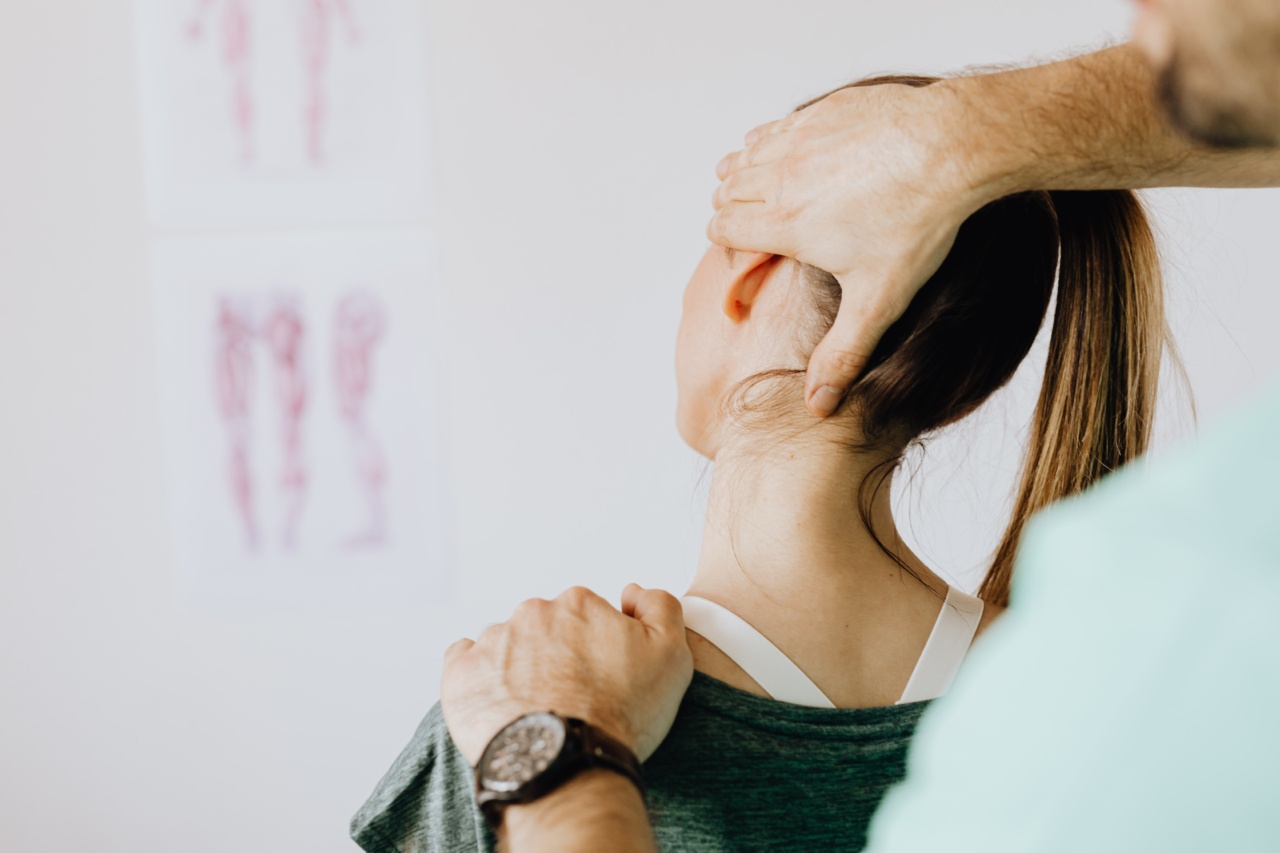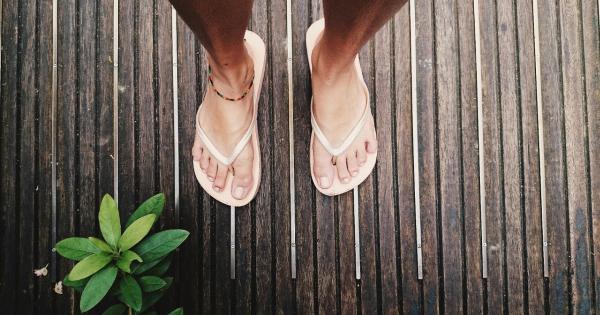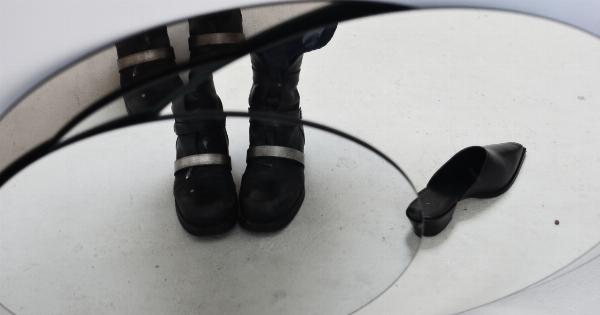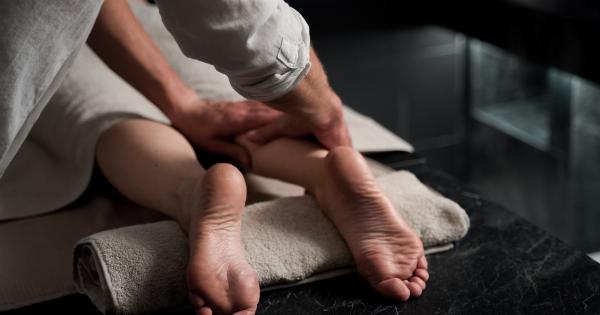Flip flops are a popular choice of footwear during the warm summer months. They are comfortable, easy to slip on, and perfect for beach days and casual activities.
However, wearing flip flops for extended periods can put a strain on your feet and increase the risk of injuries. In this article, we will discuss how to take care of your feet while wearing flip flops and prevent strain and injuries.
Choose the Right Pair
Not all flip flops are created equal. When shopping for a pair, it’s crucial to choose those that offer adequate support and cushioning. Look for flip flops with arch support, a contoured footbed, and a cushioned sole.
These features will help absorb shock and reduce strain on your feet.
Wear Properly-Fitting Flip Flops
A properly fitting pair of flip flops is essential for foot health. Avoid choosing flip flops that are either too loose or too tight. Loose flip flops can cause your feet to slide around, leading to instability and potential injuries.
On the other hand, tight flip flops can restrict your foot’s natural movements and cause discomfort.
Make sure there is about a thumb’s width of space between the end of your longest toe and the edge of the flip flop. Check that your feet are comfortably secured to the footbed without any rubbing or chafing.
If you’re unsure about the fit, try different sizes or styles until you find the perfect match.
Limit Usage Time
While flip flops are great for short periods, it’s important to limit the amount of time you wear them. Extended periods of walking or standing in flip flops can lead to muscle fatigue and strain.
Switch to more supportive shoes if you plan on being on your feet for an extended period.
If you’re going for a long walk or participating in physical activities, it’s best to opt for athletic shoes that provide proper support, stability, and shock absorption.
Save flip flops for shorter outings or when you know you won’t be on your feet for an extended duration.
Take Frequent Breaks
To prevent strain and injury, take frequent breaks from wearing flip flops. Let your feet rest and recover by removing your flip flops and giving them some much-needed breathing space.
Alternate between different types of footwear throughout the day to reduce the constant pressure on your feet. This will help alleviate strain and distribute the workload across different muscle groups.
Avoid Walking Long Distances
While flip flops may be fine for walking short distances, they are not suitable for long walks. Walking long distances in flip flops can put excessive strain on your feet, leading to arch and heel pain, as well as blisters and calluses.
If you have a long distance to cover, it’s advisable to wear shoes with better support. Walking or running shoes that are designed for distance and endurance will provide the necessary cushioning and stability for your feet.
Watch Your Walking Style
Flip flops can alter your natural walking style due to their lack of stability and support. When wearing flip flops, many people tend to shuffle or drag their feet, which can be both inefficient and potentially harmful to your feet.
Be mindful of your walking style and try to maintain a normal gait while wearing flip flops. Aim for shorter strides, and pay attention to how your feet land on the ground.
This will help reduce strain on your feet and minimize the risk of tripping or twisting your ankle.
Moisturize Your Feet
Wearing flip flops exposes your feet to the elements, making them more susceptible to dryness and cracking. To keep your feet healthy and prevent any potential discomfort or pain, make sure to moisturize them regularly.
Apply a hydrating foot cream or lotion to your feet, paying extra attention to the heels and ball of the foot. This will keep your skin moisturized and prevent it from becoming overly dry or cracked.
Protect Your Feet
Flip flops leave your feet more exposed compared to other types of footwear. This means they’re more prone to injuries from objects on the ground or accidental bumps.
To protect your feet, be cautious while walking and watch out for potential hazards.
Avoid walking on uneven surfaces, sharp objects, or rocky terrain when wearing flip flops. If you’re at the beach, pay attention to shells, rocks, and other debris that could potentially harm your feet.
Always be aware of your surroundings and take necessary precautions to prevent injuries.
Perform Foot Exercises
To strengthen your feet and minimize strain while wearing flip flops, it’s beneficial to perform foot exercises regularly. These exercises help improve the stability and flexibility of your feet, reducing the risk of injuries.
Some effective foot exercises include toe curls, picking up small objects with your toes, rolling a tennis ball under the arches of your feet, and stretching exercises for your calf muscles and Achilles tendon.
Incorporate these exercises into your daily routine to keep your feet in good condition.
Replace Worn-Out Flip Flops
Over time, flip flops can lose their cushioning and support, making them less effective at protecting your feet. It’s important to regularly inspect your flip flops for signs of wear and tear and replace them when they become worn-out.
If you notice visible signs of wear, such as flattened or compressed cushioning, outsole damage, or worn-down treads, it’s time to invest in a new pair. Continuing to wear worn-out flip flops can increase the risk of foot injuries and discomfort.
Conclusion
While flip flops offer comfort and convenience, it’s crucial to take proper care of your feet to prevent strain and injury. Choose flip flops with adequate support, ensure a proper fit, and avoid wearing them for extended periods.
Take breaks, protect your feet, and switch to more supportive shoes for activities that involve extensive walking. By following these tips, you can enjoy the summer months without compromising your foot health.



























